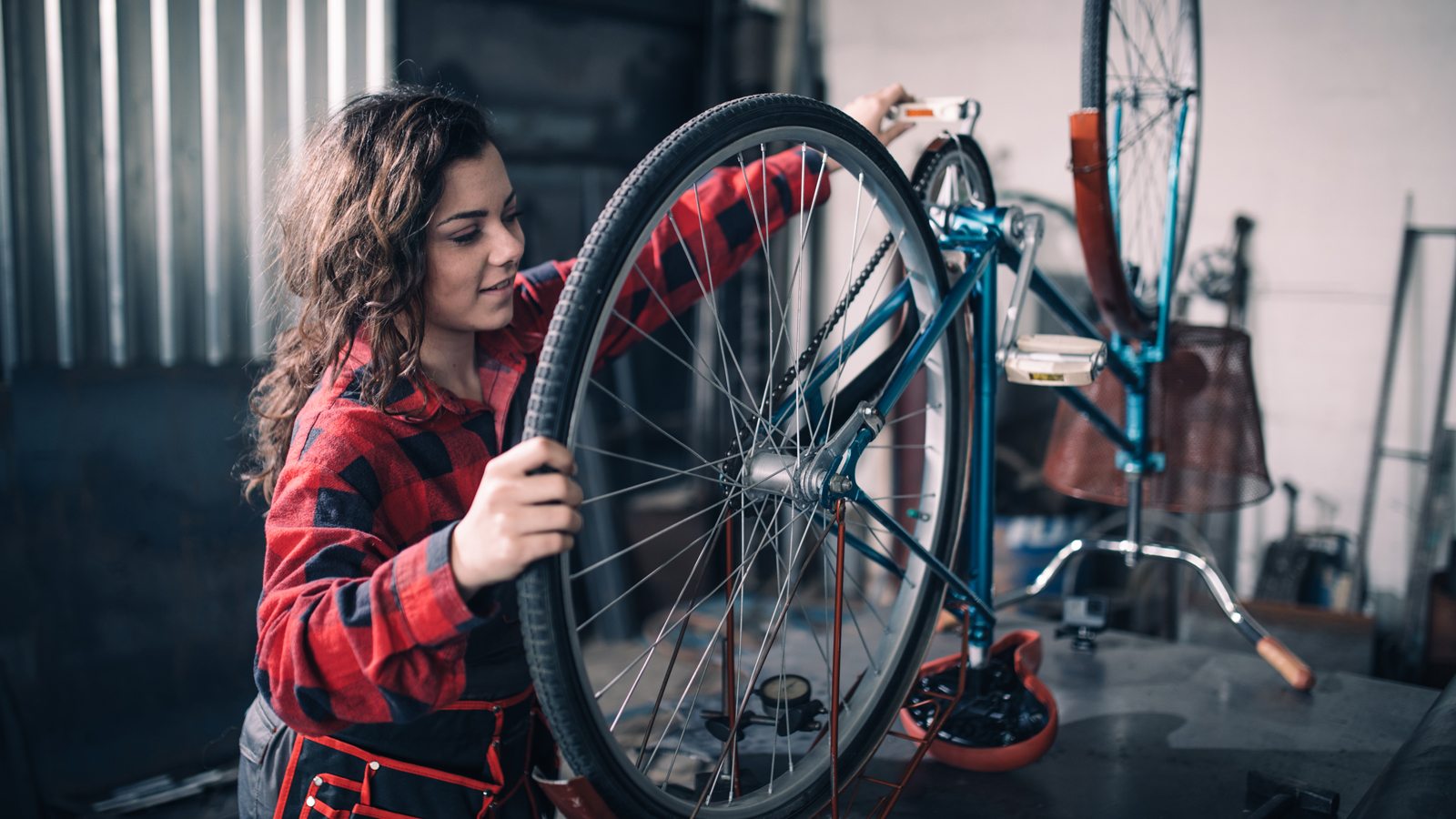Spring cleaning isn’t just about de-cluttering your garage and fertilizing the lawn. Among other things, it’s an opportunity to give your bicycle a start-of-season tune up—to get it in tip-top condition for everything from family rides around the block to off-road adventures in the Rockies to 100-kilometre circuits through the Badlands, and uphold its performance for years to come
If your bike is in great shape already, or you just want to optimize it for your own use, it’s easy to give it a basic tune up by following these steps.
CLEAN THE CHAIN
Keeping your chain clean and lubricated is an easy way to help smooth out your cycling while also minimizing the chance that your chain will break in the middle of a ride. There are many ways to clean your chain. The most rudimentary method is with soap and water, plus a brush or rag. Better, however, is to use a degreaser to attack built-up grime and gunk. (A variety of biodegradable, citrus oil-based products exist for precisely this job.). Once the chain is as clean as possible, lubricate it with dedicated bike-chain lube—not motor oil or WD40. Apply the lube, let it sit for 10 minutes, then wipe off the excess. An over-lubricated chain will just attract more grit when you ride.
CHECK THE TIRES
A simple visual check for bald spots, nicks, cracking and other signs of wear can save you from an unexpected flat—or a wipeout, since badly worn tires have a harder time gripping the road. If your tires are still in good shape, reward them with some fresh air: Pump up both tires to the inflation range that’s listed on their sidewalls. Finally, confirm that the valve stem is pointing straight out of the rim. An angled or bent valve could indicate that it’s damaged, which in turn could mean a leak in the tire tube.
TEST THE BRAKES
As with any vehicle, it’s important to ensure you have adequate stopping power. First, check your brake pads for wear and replace them if they’re overly shabby. (The grooves that you see in the pads are, among other things, wear indicators. No grooves? It’s time for new pads.) Also make certain that the brake pads are centred on the rim; misaligned, they’ll wear unevenly and could even damage your tire.
BUY & SELL USED BIKES
See when the Alberta Bike Swap is coming to your city this year
Next, test the cables by pulling on the brake levers. There should be at least a thumb’s width of space between the levers and your handlebars when the brakes are fully engaged. Less than that and you can fine-tune the cable tension with incremental clockwise turns of the barrel screw (where the cable enters the brake). If a brake is still slack, you can make a more significant adjustment by loosening the pinch bolt (where the cable goes into the brake caliper), pulling through a small amount of cable, and then re-tightening the bolt.
ADJUST THE SEAT POST
The majority of modern bikes are made from a metal alloy—steel, aluminum or titanium. With time and exposure to the elements, that metal may rust. The seat tube and post are among the most likely sites for corrosion to occur, and significant rust build-up may cause your seat post to become stuck. Periodically removing the post and smearing a thin coating of anti-seize copper grease on it will help fight against corrosion and bonding.
When you reinsert the seat post, you’ll need to ensure your saddle is at the proper height. Adjust the height so that your leg is almost fully extended—with a slight bend in the knee—when the pedal is at the lowest point during its downward stroke.
CHANGE YOUR BATTERIES
The Alberta Traffic Safety Act requires any bicycle being used at night to be equipped with a white front headlight, a red taillight and a red rear reflector. Make sure you’re safe and on the right side of the law by replacing your lights’ batteries at the start of riding season.
MORE TO READ
See the province on two wheels by planning a cycling day trip, and make sure your ride is secure with these bike-locking tips
TRUST A PRO
Tuning up your bike can be a rewarding experience; the more you know about your bicycle, the better you’ll be able to maintain and optimize it in the future. But unless you’re a real gear-head, there are some common problems that are best left to an experienced bike mechanic. For example:
• If your wheels aren’t true (i.e. if they wobble when spinning).
• If gear shifting is erratic. While adjusting shifter cables isn’t much different than tightening brake cables, adjusting the derailleur (your bike’s multi-gear transmission system) itself can be finicky work.
• If the chain looks damaged (get a new one), or if the cogs in the front chainring or rear cassette have worn down such that their teeth look pointy. Worn teeth are likely to cause chain slippage.
• If you notice any other improperly working parts or obvious signs of wear and tear that you’re not comfortable taking care of yourself.
WE’VE GOT YOU COVERED
Your AMA membership offers roadside assistance whether you’re in the driver’s seat or bicycle saddle. Our Bike Assist program means that you can use any of your annually allotted service calls to get a rescue for you and your bike if it leaves you stranded. We’ll deliver air for a flat, adjust a chain and tighten loose parts. If we can’t fix the problem, we’ll transport you (within the limit of your membership) and your bike back home or to a repair shop.
